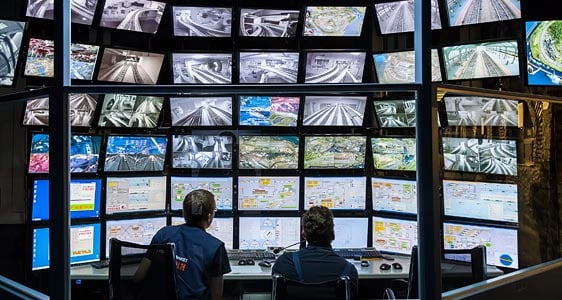
The design of a video surveillance security system can be immensely intricate. The list of considerations that need to be taken, regarding a variety of factors, is extensive: how many cameras should be implemented, whether they should be IP, analog, or a mix of both, whether they should be P/T/Z or fixed (and the pros and cons of both), what sort of lenses should be used, the degrees of their angular field of view, integrating analytical software or recording technology—and more. Because of the inherent security risks a business may encounter, comprehending the degree of security needed for a specific video solution is paramount to any organization in need of surveillance.
It can be agreed upon that almost every video surveillance system installation, no matter its size or complexity, aims to fulfill any or all of three main goals:
- Provide safety and protection for property and personnel by proactively monitoring for security threats or vulnerabilities.
- Enable users to view areas covered by surveillance remotely to ensure they are out of reach of any potential harm.
- Yield high-quality video footage for post-incident reporting purposes.
In order to guarantee maximum surveillance coverage of an organization, some may argue the more cameras the better. In some cases, this is true, as the mere presence of a visible camera in an area can act as a deterrent to potential burglaries or attacks, but in many instances, it’s not the amount of cameras that necessarily makes a space safer, but rather how they are used and what technological innovations they incorporate.
- Despite the rising prevalence of networked IP/megapixel cameras in modern security systems, cameras that output signals over an analog medium (via coaxial cable) continue to find useful ways to boost a facility's protection thanks to technical advances such as higher quality digital sensors and video processing.
- Pan/tilt/zoom (P/T/Z) cameras are commonplace, but they only provide a view of a limited area at any given time. Similarly, fixed cameras increase the degree of security within an organization, but so do equipment costs in order to cover every vulnerable area. A novel development and potential solution is the use of virtual P/T/Z cameras, which essentially stitch together image information from multiple wide-angle and/or megapixel cameras using specialized software. This approach allows central station operators the ability to change camera views digitally, without the need to move the physical lens of the camera.
- Video analytics applications have been of interest to many security system designers due to their ability to aid cameras by incorporating intelligent algorithms that detect motion and can differentiate between common false triggers versus real threats. Similarly, thermal cameras are popular for outdoor use as they pinpoint heat signatures, which is beneficial for cameras that may struggle to properly discern images due to extreme sunlight, complete absence of light, reflectance of light, and other stimuli.
Procedures and products for video solutions continue to advance every year so it’s important to stay up-to-date with the technology of system design. However, one aspect of surveillance will not change: cameras are not the only piece of the puzzle. To reach peak coverage, integration of cameras into other security systems and technologies, such as access control and intrusion detection, remains a necessity.
